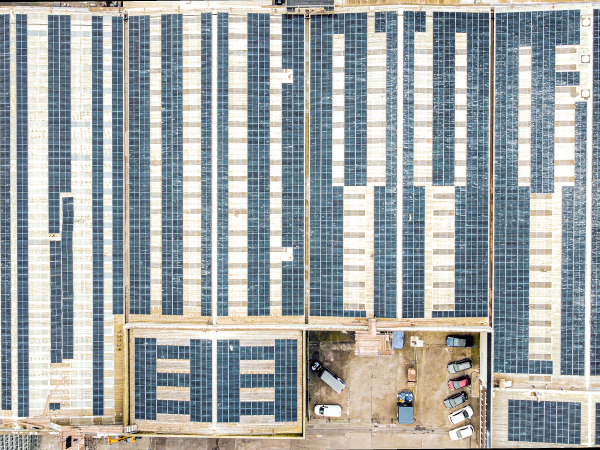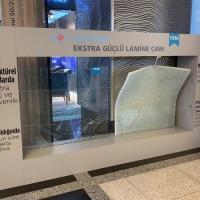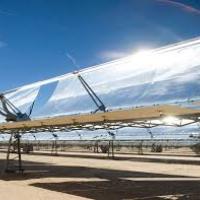Date: 16 November 2006
SCHOTT will play a leading role by providing a key component.
Although it might one day be considered only one small step for a technology with huge potential, on April 22, Earth Day, the Arizona Public Service Company (APS), the largest energy supplier in this southwestern U.S. state, inducted a power plant with one megawatt of power on top of a strip of desert between Phoenix and Tucson. It is hardly a normal power plant, because it receives its power free-of-charge from the sun. Six rows of parabolic mirrors, each approximately 400 meters in length, concentrate the incident solar radiation to generate heat for a steam turbine (see infobox). Since December of 2005, the generator has been supplying enough electricity for 200 households.
Parabolic trough power plants rank among the most mature solar thermal technologies for use in generating electricity. Producing one megawatt (MW) of electrical power is child’s play for this type of power plant, because they are capable of producing 50 MW or more. The technology was first put to commercial use back in the middle of the 1980s. Between 1984 and 1991, nine such power plants were built in the Mojave Desert in California, with an initial output of 14 and later 80 MW. In total, they generate 354 MW of power. Even then, SCHOTT was the company that supplied the glass cover tubes for the receivers, on top of which the solar radiation is concentrated by the parabolic mirrors. These same power plants still function perfectly today. With operational up time of more than 98 percent, they produce approximately 800 million kilowatt hours of electricity each year.
At the time, these plants were built as a response to the oil crisis. A bundle of investment- related exemptions, freedom from paying property taxes and long-term guarantees on electricity feed-in prices contributed towards making this project in the Mojave Desert economical. When the investment incentives were dropped in 1990, following a decline in oil prices, the brief phase of prosperity for solar thermal power plants came to a halt. However, they are currently experiencing a strong comeback. The price for natural gas that many fossil power plants rely on today, due to the fact that their investments are low, has quadrupled over the last three years alone. In addition, many states in the southwestern region of the U.S.A. have set ambitious goals with respect to the share that they would like renewable energy to have in their total power generation. Here, California leads the way with 20 percent by the year 2010; Nevada hopes to achieve this same level by 2015. New Mexico and Colorado each plan to achieve ten percent by 2011 and 2015, respectively. Arizona is shooting for 15 percent by the year 2025.
U.S.A. discovering its potential
For these five states, as well as the bordering states, Utah and Texas, the National Renewable Energy Laboratory, the largest research center on renewable energy sources in the U.S.A., conducted a geographic analysis to look into the regions that would be best suited for centralized solar power plants. Despite conservative assumptions, such as a slope of no more than one percent, the remaining surface would still enable a power plant output of 200,000 MW. This would cover approximately 17 percent of the U.S.A.’s current power requirements.
Last December, the Western Governors’ Association’s solar working group, to whom the governors of 18 different states, three U.S. Pacific islands and two Canadian provinces belong, presented a report that contained the recommendation to provide tax incentives for building centralized solar power plants with a total output of 4,000 MW in six southwestern states by the year 2015. Texas was not included, because it belongs, for the most part, to a different network. Due to the overall size of the venture, the costs of generating electricity would drop to a competitive level of 10 U.S. cents/kWh, the authors of the study say.
According to a common report put out last September by Greenpeace, the European Federation of the Solar Thermal Power Plant Industry (ESTIA) and the »SolarPACES« research program of the International Energy Agency, the costs of purely solar operated parabolic trough power plants (without fossil fuel support) in the southwest of the U.S.A., with its high incident solar radiation, would currently range between 15 and 17 U.S. cents/kWh or roughly 11.5 to 13 Euro cents/kWh. In Mediterranean countries with somewhat less sunlight, the cost would be approximately 20 Euro cents/kWh. For this reason, the European Parliament called on the EU Commission to increase its funding support for solar thermal power plants only this past September.
The beginning has already been made with respect to breaking into the market in a major way. On February 11, the ground-breaking ceremony for a parabolic trough power plant with 64 MW of power took place in Boulder City, Nevada. It is scheduled to start supplying power to the grid in June of 2007. As with the smaller power plant in Arizona, the receiver tubes, a key component of the power plant that converts the concentrated solar radiation from the parabolic mirrors into heat, were provided by SCHOTT. The technology group has developed a highly efficient and extremely robust receiver that offers two percent higher eYciency than competitive products. “The new receivers from SCHOTT provide a solid foundation for the success of the power plant,” says John Myles, President of the American project group, Solargenix Energy. As one of the leading manufacturers of special glass tubes, SCHOTT is able to build on its unique know-how, decades of experience and expertise in glass-to-metal seals and coating technologies. “With the order we received for the power plant in Nevada, we have successfully positioned ourselves as a global technology leader in the field of receivers,” says Dr. Martin Heming, head of the Business Unit Solar at SCHOTT.
Spain is setting the pace
Another order from Spain is definitely on the way. With feed-in compensation of nearly 23 Euro cents/kWh for solar thermal power plants over a course of 25 years, this country has developed into an important market. The Greenpeace report predicts that approximately 500 MW will have been installed by the year 2010. Following receipt of financing approval from the banks, construction of the first parabolic trough power plant with an output of 50 MW on top of the plateau of Guadix in the southern Spanish province of Granada commenced in mid-June.
Only a few days before, the German project management company, Solar Millennium AG, had signed a skeleton agreement in Beijing with two Chinese companies on the realization of solar thermal power plants with a total output of 1,000 MW by the year 2020. Greece could well become the next interesting market. The Renewable Energy Sources Law ratified at the beginning of June provides for solar thermal power plants of more than 5 MW to pay feed-in compensation of 23 Euro cents/kWh on the mainland and 25 Euro cents/kWh on islands. Israel is also preparing feed-in legislation. Other projects, supported in part by the World Bank, are planned in Mexico, Morocco, Algeria, Egypt and Iran. Here, parabolic trough fields are to reduce the fuel consumption of conventional power plants.
















Add new comment